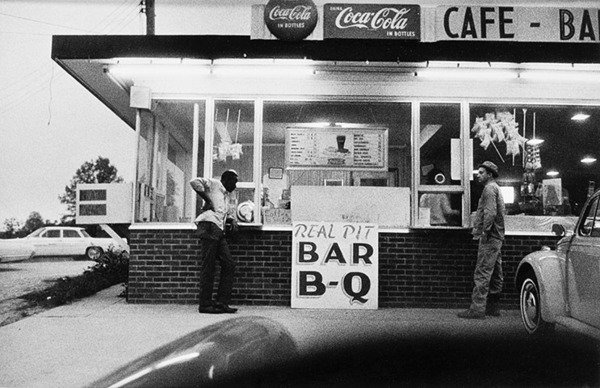William Eggleston
dal 15/6/2012 al 25/8/2012
Segnalato da
15/6/2012
William Eggleston
Nederlands Fotomuseum, Rotterdam
"Before Color" shows early works of the pioneer of artistic colour photography. Inspired by Henri Cartier-Bresson, Eggleston used a 35mm camera and fast black-and-white film to photograph the American way of life in the early 1960s.

The American photographer William Eggleston (1939) is known as one of the first major pioneers of
artistic colour photography. His book William Eggleston's Guide was one of the most influential
photography books of the 20th century and still inspires many today. Eggleston's black-and-white
photographs are less well-known. In Before Color, the Nederlands Fotomuseum highlights this famous
photographer's earliest work, which was only recently discovered. The photographs show that Eggleston
found his own style early on. Inspired by Henri Cartier-Bresson, Eggleston used a 35mm camera and fast
black-and-white film to photograph the American way of life in the early 1960s. We see his own
surroundings: suburban Memphis, with its diners, car parks and supermarkets, as well as the houses and
domestic interiors of the people who lived there. Before Color by William Eggleston will be on display
from 16 June until 26 August.
When Eggleston started taking photographs in the early 1960s, he was particularly inspired by the French
photographer Henri Cartier-Bresson and his book The Decisive Moment from 1952. Contrary to the big names in
American photography at the time – who were preoccupied with the stunning landscape, like Ansel Adams –
Cartier-Bresson took snapshots of everyday life. Eggleston found this approach very appealing. Using a 35mm
camera and fast black-and-white film he began photographing his own surroundings. These were predominantly
shaped by suburban Memphis, with its diners, car parks and supermarkets, but he also focused on the houses and
domestic interiors of the people who lived there.
Breaking a tradition
At the same time Eggleston experimented with colour photography. Together with Joel Meyerowitz, Joel
Sternfeld and others, he broke the long tradition of black-and-white photography by working in colour and
focusing on subjects from daily life. In 1972 he completed an extensive series of 2,200 photographs entitled Los
Alamos, which provided a unique picture of life in America in the '60s and early '70s. He discovered the deep
and saturated colours of the so-called dye-transfer printing technique, originally a commercial application that he
perfected and that would become his international trademark. His first solo exhibition in 1976 was also the first
exhibition in the Museum of Modern Art devoted to colour photography. The exhibition was accompanied by
what would become the acclaimed and influential book William Eggleston's Guide.
“As these rediscovered prints reveal, the man who made colour photography into an artform worked
brilliantly in monochrome – and his eye for unsettling detail is every bit as sharp”
– Sean O’Hagan, The Guardian
Before color
Eggleston would later abandon black-and-white film altogether and his earliest work was forgotten. So it was a
surprise when a box of his black-and-white photographs was recently found in the archives of the William
Eggleston Artistic Trust in Memphis. The photographs were exhibited for the first time in 2010 at the Cheim &
Read Gallery in New York and published in the book Before Color (Steidl, 2010).
Before Color exhibition
This is the first time that Before Color has been exhibited in the Netherlands and includes nearly 40 photographs
from William Eggleston's early career. The images show that Eggleston found his personal style and
photographic motifs early on and provide a wonderful picture of the American way of life in suburban Memphis
in the 1960s. The exhibition was realised in cooperation with Peder Lund, Oslo.
Book
Before Color | William Eggleston | Steidl | € 48,- | ISBN 978-3-86930-122-8
See Also: www.egglestontrust.com
Press contact:
Claire Beke PR & Marketing +31 (0)10 2030403 press@nederlandsfotomuseum.nl
Nederlands Fotomuseum
Wilhelminakade 332, 3072 AR Rotterdam
Opening hours
Tuesday to Friday 10 a.m.-5 p.m.
Saturday and Sunday 11 a.m.-5 p.m.
Free entrance on Wednesday’s



